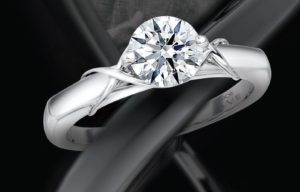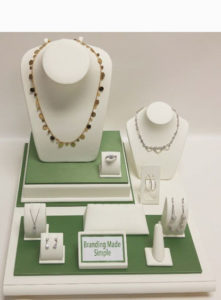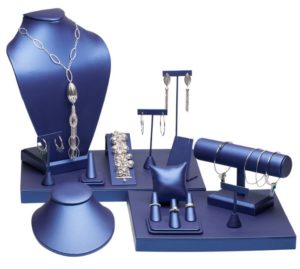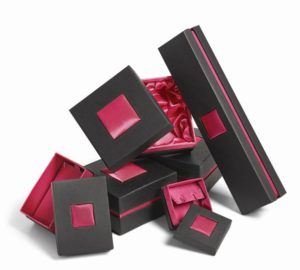Consistency Builds Brand Equity
Building a brand is a long-term investment and consistency is critical in all of your messaging from displays and packaging to merchandising and marketing.
Consistency manages perceptions; connotes professionalism, purpose and stability; conveys outlook and attitude; builds on previous successes; instills confidence and eliminates brand confusion; and protects your investment, defines Rob McDorman for North Star Marketing, Burlington, North Carolina.
 Every company has a brand, whether it makes it a priority or not. Your brand is what people think about you—the impressions they have when hearing or seeing your name. Your brand is initially reflected in your logo then supported by your messaging that influence attitudes and opinions about your company.
Every company has a brand, whether it makes it a priority or not. Your brand is what people think about you—the impressions they have when hearing or seeing your name. Your brand is initially reflected in your logo then supported by your messaging that influence attitudes and opinions about your company.
“All elements must look the same and support one another,” cites Rebecca Foerster, Leo Schachter Diamonds, New York City. “The logo must be consistent. The color palette must always be used. All of this creates an aesthetic and consumer perception of your brand. When you see an element of that brand it should trigger what it represents.”
Think Tiffany and its legendary robin’s egg blue box with white ribbon. The box and its color immediately generate excitement for this coveted jeweler and its products, delivering instantly the brand message: Tiffany is love. “It creates a Pavlovian response, without even seeing the name,” tells Mike Kaplan, Rocket Redbox, Bronx, New York. “Whether it’s a rattle or 3-carat diamond ring, it evokes expectations that it’s from Tiffany and what that means.”
To effectively develop and maintain your brand message, jewelers must define who they are, who their customers are, and how they can deliver the best retail experience, says Kaplan. Foerster reminds that no brand can be all things to all people, so jewelers should pick their target based on their merchandise and market, then build the brand elements that appeal to that group.
Focus on what makes your store special, different and distinctive, promotes Pam Danziger, president of Unity Marketing, Stevens, Pennsylvania and author of “Shops That Pop.” “Lead with your specialness, which becomes your brand.”
Delight in Displays
The key to engaging customers, counsels Danziger, is in the pop equation: time + interaction = money. She defines shops that pop as a convergence of atmosphere, store design, and merchandise that encourage customer curiosity, involvement and interaction. “Your store is more than a space set up to sell stuff, it’s a stage to tell a special story.”
Foerster cites the value of “talking” displays. “They impart information with visual cues like graphics, signage, small video monitors looping demos and storytelling footage. “Use props to tell the product story, not steal the show. Whatever can be done to create an experience and bring the product to life is a plus.”
Go for new ways to conquer the fives senses to get customers to feel, think, act, and relate. Market analyst Liz Chatelain from the Los Angeles-based MVI Marketing advises jewelers find ways to leave lasting impressions like inspiring music, special fragrance, tasty treats that speak to their brand identity. She also endorses retailers integrate design-your-own technology or create a software bar for customers to personalize their jewelry experience.
 Because shopping has become a leisure activity, jewelers who adopt a gallery mentality/museum environment benefit by enticing people to visit often. Danziger cites Doyle & Doyle in New York City as an example of how fine jewelers can make security work for customer involvement. “Jewelry is displayed at eye level as works of art and hangs as it would on the person. The displays limit exposure for thieves and maximize exposure for customers.”
Because shopping has become a leisure activity, jewelers who adopt a gallery mentality/museum environment benefit by enticing people to visit often. Danziger cites Doyle & Doyle in New York City as an example of how fine jewelers can make security work for customer involvement. “Jewelry is displayed at eye level as works of art and hangs as it would on the person. The displays limit exposure for thieves and maximize exposure for customers.”
Museum cases or free standing locking top view cases are ideal if a store has space, says Debra Puzio, creative director for Pranda and the Ariva brand, New York City. “They can be changed monthly to reflect new brand additions, product or seasonal influences.” She also is a proponent of merchandising by theme, color or collection nuance. Foerster adds that it’s important to show jewelry as an accessory and part of one’s lifestyle.
Community connections go a along way too, recommends Denise Cabrera, product manager, display and packaging, Rio Grande, a Richline brand, Albuquerque, New Mexico. “Include local stories in your store. If there’s a marathon in your hometown, use props in your cases like ribbons, medals, and pictures of runners to celebrate the event.”
The key to keeping things fresh is changing things often, reminds Sharon Pisciotta for GemPak, a Quality Gold brand, Dallas, Texas. “Change up displays, and move them around the store. It helps customers to see your merchandise in new and different ways.”
Packing a Punch
It’s a fact, when a person pulls out a jewelry box the receiver’s heart rate accelerates for 95% of folks, reports Chatelain. She also cites that more than 50% of gift receivers keep the box.
“Buying jewelry is a luxury experience, and part of that experience is the packaging,” says Kaplan, who cites the two constants: the jeweler’s name/logo and color. “Give away a box nice enough to keep, that’s built in advertising with a long shelf life.” He advises jewelers keep things fresh by introducing new colors or color combinations and textures.
Piscotta says it’s not uncommon for jewelers to offer different tiers and types of packaging for different jewelry items, from fashion to heirloom. “The trend among jewelers is to have three tiers of packaging for lower, mid and higher end items. But she emphasizes that jewelers keep a consistent brand image throughout.
Chatelain notes that while many jewelers order from stock programs, small efforts of customization can go a long way to make the experience special. “I knew a jeweler who had staff that could do calligraphy and wrote personal messages inside the gift boxes.” Thinking outside the box allows jewelers to personalize the presentation, concurs Foerster, who advocates branding other collectibles like an umbrella.
Brand Partnerships
To create an extraordinary shopping experience for customers, jewelers must offer a unique vision with carefully curated products and services delivered in a personal and personalized way, advocates Danziger.
Jewelry brands that speak to the jeweler’s brand identity are an important part of the jeweler’s brand story. “Partnering with strong quality brands is critical when building your own brand,” says Maren Pfister, merchandise manager, Ostbye, Minneapolis, Minnesota. Strong brands provide support tools to help tell the story, like Ostbye’s Thru the Store™ system that offers, custom design process, online jewel box, marketing artwork, branded displays, flyer programs, co-op advertising, trade-up program, and stock balancing.
Well-constructed brands bring a unique point of view and selling proposition along with a brand promise to a jeweler’s product portfolio, says Puzio. “If the brand demonstrates differentiation, cohesive design, expert craftsmanship, marketing support and quality brand collateral, the competitive retailer can evolve their existing model to attract new customers and build customer loyalty.”
 The virtual experience, cites Puzio, is as tangible as the in-store one as it keeps the conversation going. “It’s critical for jewelers to have a good website that showcases their store footprint and company positioning. She notes that brands like Ariva link consumers to authorized jewelers, and also provide product images and social media support to generate buzz and create a community environment on popular platforms including Facebook, Pinterest and Instagram.
The virtual experience, cites Puzio, is as tangible as the in-store one as it keeps the conversation going. “It’s critical for jewelers to have a good website that showcases their store footprint and company positioning. She notes that brands like Ariva link consumers to authorized jewelers, and also provide product images and social media support to generate buzz and create a community environment on popular platforms including Facebook, Pinterest and Instagram.
Marty Hurwitz with MVI Marketing also hails video content on your website a great asset to increase user engagement. MVI offers custom editions of its Jewelry Consumer News videos that explore the latest in style, trend and fashion for brands and jewelers. It just completed a JCN custom edition for SDC Designs and Jared, and is developing one for Interjewel, both Plumb Club brands.










